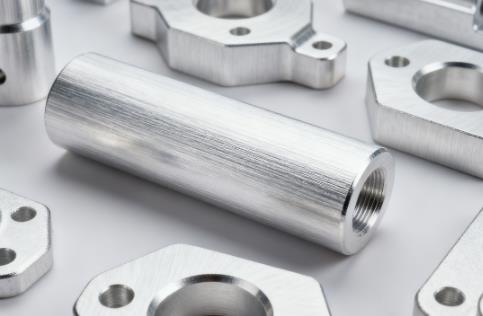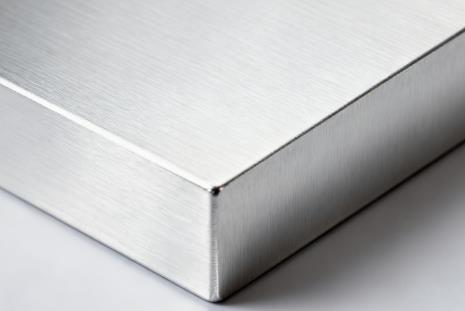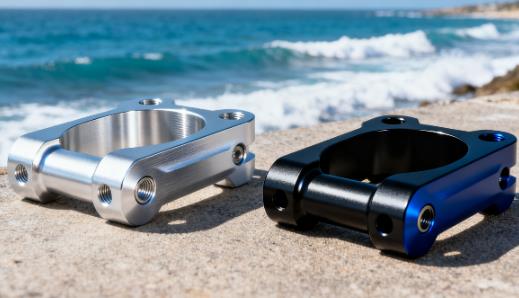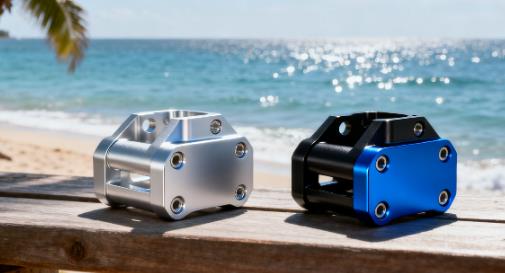Aluminum alloys are essential in modern engineering and manufacturing because they combine low weight with high strength, corrosion resistance, and excellent processing flexibility. Among the many available grades, 6061 aluminum alloy and 5052 aluminum alloy stand out as two of the most widely used. Each has distinct advantages that suit specific industries and applications.
This article provides a systematic comparison of 6061 and 5052 aluminum alloys, analyzing their chemical composition, mechanical properties, corrosion resistance, weldability, machinability, cost efficiency, and application fields. It also offers guidance on material selection to help engineers and designers balance performance, cost, and processing requirements.
Chemical Composition and Basic Characteristics
6061 belongs to the 6xxx series and is primarily alloyed with magnesium (Mg) and silicon (Si). Typical composition:
- 97.9% aluminum (Al)
- 1.0% magnesium (Mg)
- 0.6% silicon (Si)
- 0.28% copper (Cu)
- Small amounts of chromium (Cr), iron (Fe), and zinc (Zn)
The Mg-Si combination enables heat treatment, which boosts mechanical strength, while copper enhances load-bearing performance.

5052 Aluminum Alloy
5052 is part of the 5xxx series, classified as non-heat-treatable. Its main alloying elements are magnesium and chromium. Typical composition:
- 97.3% aluminum (Al)
- 2.2% magnesium (Mg)
- 0.25% chromium (Cr)
- 0.15% manganese (Mn)
- Trace amounts of Fe and Si
The higher magnesium content makes 5052 exceptionally resistant to corrosion and highly formable, especially for sheet metal applications.

Mechanical Properties
Mechanical properties determine how an alloy performs under load, machining, and forming conditions.
| Property | 5052 Aluminum Alloy | 6061 Aluminum Alloy |
|---|---|---|
| Tensile Strength | 214–283 MPa (31,000–41,000 psi) | 186–310 MPa (27,000–45,000 psi) |
| Yield Strength | 83–207 MPa (12,000–30,000 psi) | 55–276 MPa (8,000–40,000 psi) |
| Elongation (ductility) | 12–25% | 8–25% |
| Brinell Hardness | 47–67 | 95–150 |
| Heat Treatment | Non-heat-treatable | Heat-treatable (e.g., T6 temper) |
Interpretation:
- 6061 delivers higher hardness and yield strength, making it suitable for structural and load-bearing parts.
- 5052 excels in ductility and corrosion resistance, making it better for forming and marine exposure.
Corrosion Resistance
5052 Aluminum Alloy
Outstanding corrosion resistance, especially against saltwater and marine atmospheres. Ideal for boats, ships, and coastal infrastructure.
6061 Aluminum Alloy
Provides reasonable corrosion resistance in normal environments, but its copper content makes it less suitable for long-term saltwater exposure. Surface treatments such as anodizing or powder coating can improve performance.
At Rapid Model, when we manufacture CNC parts from 6061 or 5052 aluminum, we often recommend anodizing for enhanced durability and corrosion resistance—particularly for components used outdoors or in marine settings.
Weldability and Formability
5052 Aluminum Alloy
Excellent weldability, low risk of cracking in the heat-affected zone, and minimal property degradation after welding. Outstanding formability allows deep drawing, bending, and shaping into complex designs.
6061 Aluminum Alloy
Good weldability but more prone to cracking due to copper content. Post-weld heat treatment may be required to restore strength. Its formability is moderate—adequate for simpler bends but less suitable for intricate forming.
This difference is critical in CNC sheet metal fabrication. At Rapid Model, when clients require complexly bent or deep-drawn sheet components, we recommend 5052 aluminum. For precision-machined structural parts, 6061 is the better option.
Cost and Weight
Cost Analysis
5052 is generally more cost-effective due to simpler composition and production. 6061 is slightly more expensive but justifies the cost with higher mechanical strength and versatility.
Weight Comparison
Negligible difference (5052 ≈ 2.68 g/cm³; 6061 ≈ 2.70 g/cm³). Weight is rarely the deciding factor.
Application Fields
5052 Aluminum Alloy Applications
- Marine industry: Hulls, decks, marine hardware (superior saltwater resistance)
- Construction: Roofing, siding, exterior panels, architectural cladding
- Transportation: Automotive panels, truck bodies, fuel tanks
- Consumer goods: Kitchenware, electronic enclosures, signage
- Industrial equipment: Storage tanks, pressure vessels, HVAC units
6061 Aluminum Alloy Applications
- Aerospace: Aircraft frames, wings, and structural parts
- Automotive: Engine components, chassis, wheels
- Industrial manufacturing: Precision CNC machined parts, mechanical frameworks
- Sports equipment: Bicycle frames, climbing gear, golf clubs
- Architecture: Structural beams, load-bearing elements
In practice, Rapid Model often helps clients decide between 5052 and 6061 aluminum depending on their project needs. For example, we machine 6061 parts for aerospace and automotive prototypes requiring high strength, while 5052 is used in sheet metal fabrication projects demanding corrosion resistance and cost efficiency.

FAQs About 5052 vs 6061 Aluminum
1. What is the main difference between 5052 and 6061?
5052 is non-heat-treatable, offering better corrosion resistance and formability. 6061 is heat-treatable, delivering higher strength and machinability.
2. Which alloy is better for marine use?
5052, thanks to its superior resistance to saltwater and marine environments.
3. Can both alloys be heat-treated?
No. Only 6061 responds to heat treatment (e.g., T6 temper). 5052's properties remain stable under heat.
4. Which is more cost-effective?
5052, especially for sheet metal and large-scale fabrication where strength demands are moderate.
5. Which is better for CNC machining?
6061 is preferred for CNC precision machining due to its excellent machinability and strength. 5052 is better for sheet metal forming rather than heavy machining.
Practical Selection Guide
When choosing between 5052 and 6061 aluminum, consider:
- Environment: For harsh or marine conditions → 5052
- Strength requirements: For structural load-bearing parts → 6061
- Forming complexity: For deep drawing, bending, or shaping → 5052
- Machining needs: For CNC milling, turning, and precision machining → 6061
- Budget sensitivity: For cost-controlled projects → 5052
Conclusion
Both 6061 and 5052 aluminum alloys are industry workhorses, each excelling in different areas:
- 6061: Higher strength, heat-treatability, excellent machinability—ideal for aerospace, automotive, and precision CNC components.
- 5052: Superior corrosion resistance, excellent formability, and cost efficiency—best for marine, construction, and sheet metal fabrication.
At Rapid Model, we specialize in custom CNC machining services, offering both 6061 and 5052 aluminum solutions. With over 20 years of engineering experience, our team helps clients select the right material, optimize designs, and deliver precision-engineered parts with fast turnaround times.
By understanding the unique strengths and limitations of each alloy—and working with a reliable CNC partner—you can make informed material decisions that balance performance, cost, and durability, ensuring the success of your projects across industries.



